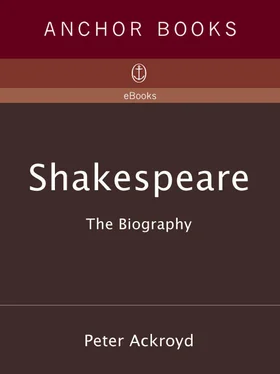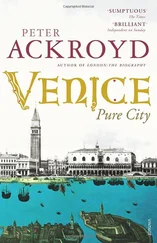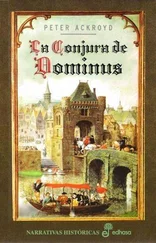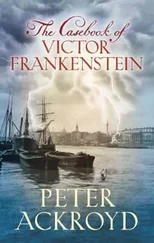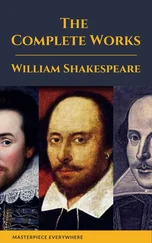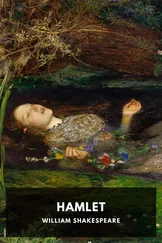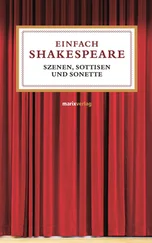Peter Ackroyd - Shakespeare
Здесь есть возможность читать онлайн «Peter Ackroyd - Shakespeare» весь текст электронной книги совершенно бесплатно (целиком полную версию без сокращений). В некоторых случаях можно слушать аудио, скачать через торрент в формате fb2 и присутствует краткое содержание. Год выпуска: 2005, ISBN: 2005, Жанр: Биографии и Мемуары, на английском языке. Описание произведения, (предисловие) а так же отзывы посетителей доступны на портале библиотеки ЛибКат.
- Название:Shakespeare
- Автор:
- Жанр:
- Год:2005
- ISBN:978-0-307-49082-7
- Рейтинг книги:5 / 5. Голосов: 1
-
Избранное:Добавить в избранное
- Отзывы:
-
Ваша оценка:
- 100
- 1
- 2
- 3
- 4
- 5
Shakespeare: краткое содержание, описание и аннотация
Предлагаем к чтению аннотацию, описание, краткое содержание или предисловие (зависит от того, что написал сам автор книги «Shakespeare»). Если вы не нашли необходимую информацию о книге — напишите в комментариях, мы постараемся отыскать её.
Shakespeare — читать онлайн бесплатно полную книгу (весь текст) целиком
Ниже представлен текст книги, разбитый по страницам. Система сохранения места последней прочитанной страницы, позволяет с удобством читать онлайн бесплатно книгу «Shakespeare», без необходимости каждый раз заново искать на чём Вы остановились. Поставьте закладку, и сможете в любой момент перейти на страницу, на которой закончили чтение.
Интервал:
Закладка:
Shakespeare’s immediate neighbour, east towards Bridge Street, was the tailor William Wedgewood. His tailor’s shop was next to the glover’s, in other words. He owned two other houses in the same stretch of street, but was eventually compelled to leave Stratford when it was discovered that he had “there marryed an other wife his first wife yet living.” He was also accused of being “very contencious prowde & slaunderous oft buseing himself with noughty matters & quarrelling with his honest neighbours.” 1So, living next door, he may have been difficult. The young Shakespeare must have soon become acquainted with the vagaries of human conduct.
Next to Wedgewood’s house was the smithy of Richard Hornby who, among other things, forged the iron links to fasten local prisoners. He made use of the stream that ran past his house. The tailor Wedgewood and the smith Hornby seem to make an appearance in Shakespeare’s King John (1815-18) when a citizen, Hubert, remarks that
I saw a Smith stand with his hammer (thus)
The whilst his Iron did on the Anuile coole,
With open mouth swallowing a Taylors newes,
Who with his Sheeres, and Measure in his hand …
It is a moment of observation snatched out of time.
Hornby had five children, and indeed the street was altogether filled with children. One Henley Street family had seven, and another had fourteen. As an infant Shakespeare could never have been alone. It is the open life of the towns memorialised in Romeo and Juliet, The Two Gentlemen of Verona, The Taming of the Shrew , and The Merry Wives of Windsor . It irradiates the Venice of Othello and the Ephesus of The Comedy of Errors .
On the further side of the stream resided another glover, Gilbert Bradley. Since he became godfather to one of John Shakespeare’s other sons, it may be assumed that theirs was a friendly rivalry. Further down the street lived George Whateley, a woollen-draper, who was wealthy enough to endow a small school at the time of his death. He was a Roman Catholic, and two of his brothers became fugitive priests. Next to him was the haberdasher, and Shakespeare’s godfather, William Smith, who had five sons. Just beyond his shop, across the road at the corner of Fore Bridge Street, was the Angel Inn. It was owned and managed by the Cawdrey family, who were also staunch Catholics; one of their sons trained as a Jesuit priest in exile. This was a close community in every sense.
So the northern side of Henley Street was populated by clothiers of one kind or another, and is a token of that clustering of trades that took place in most market towns. Shakespeare grew up in an atmosphere of animated business. On the western end of the street John Shakespeare’s closest neighbour was another Catholic, George Badger, a woollen-draper whose principal business was in Sheep Street. He was elected as an alderman but was deprived of his office; he was even sent to prison because of his staunch Catholicism. His was not a model that John Shakespeare chose to follow. Beyond Badger lived a yeoman farmer, John Ichiver, about whom little is known. There were other neighbours in Henley Street. There were six shepherds’ families, for example, two of whom, the Cox and the Davies families, lived directly opposite the Shakespeares. John Cox was well known to the Hathaways, soon to be mingled with the Shakespeares. The shepherds in Shakespeare’s plays are not some pastoral invention.
On the same side of the street resided Thomas a Pryce, a “mettle-man” or tinker. John Shakespeare stood surety for his son when the young man was charged with a felony. Here also lived John Wheeler, an alderman and recusant Catholic; he owned four houses in the street as well as tenements elsewhere. There was also a wool merchant, Rafe Shaw, whose goods John Shakespeare appraised, and Peter Smart, whose son became a tailor. Already we can see the outlines of a close community, with many familial as well as religious and mercantile ties.
It would be otiose to prepare a roll-call of the townspeople of Stratford, except to the extent that they emerge in Shakespeare’s own life. So we find the Quineys, for example, visiting the dramatist in London and calling him “loving good friend and countryman.” One of them eventually married Shakespeare’s younger daughter, Judith, and so we can presume some degree of intimacy. They were fierce Catholics married into the Badger family who, as we have seen, owned a house next door to John Shakespeare. Adrian Quiney was a grocer who lived on the High Street and who was three times mayor of Stratford. In that capacity he knew John Shakespeare very well. It was his son, Richard, who formed the friendship with Shakespeare; the dramatist was probably godfather to his child, baptised William.
The Quineys also married into another family, the Sadlers, who were in turn closely connected with the Shakespeares. John Sadler, who lived in Church Street, was the owner of several mills and barns in Stratford; he was also a landowner and proprietor of the Bear Inn in Stratford. He had been bailiff of the town, and John Shakespeare voted for his second term.
The Bear Inn was eventually sold to the Nash family of Stratford; they too were Catholic, and they also married into the Shakespeare family. The host of the Bear Inn, Thomas Barber, was also a Catholic. A few months before his death Shakespeare was concerned to protect “Master Barber’s interest.” It is important to recognise the line of sympathies and affiliations beneath the surface of Stratford life. A kinsman of John Sadler, Roger Sadler, was also a baker; when he died, money was owed to him both by John Shakespeare and by Thomas Hathaway.
A member of the Combe family left money to Shakespeare in his will, and in turn Shakespeare bequeathed another Combe his sword. It may have been the ceremonial sword that he wore on state occasions, in his somewhat unlikely position as Groom of His Majesty’s Chamber, and therefore of some value. The Combes sold land to the dramatist, and shared with him an income from certain tithes. It was, in other words, a close-knit collaboration between two families. The Combes were described as “one of the leading Catholic families of Warwickshire,” 2but they also serve as an example of the conflicting religious commitments of the era; of two brothers, one was a Catholic and one a Protestant. There was also a family tradition of money-lending, not unknown among wealthy Stratfordians, as we have seen, and Shakespeare is popularly believed to have written some doggerel on the subject that was placed on the grave of John Combe.
In his last will and testament, drawn up as he lay dying in his home town, Shakespeare left 26 s 8 d each to Anthony Nash and John Nash, for the purchase of memorial rings. Anthony Nash farmed the tithe land that Shakespeare owned, and was close enough to him to act as his representative in various Stratford dealings. John Nash, too, acted as a witness on his behalf. They were Catholics who in characteristic fashion entered the network of marriage and kinship with the Quineys and the Combes and of course the Shakespeares. Anthony Nash’s son married Shakespeare’s granddaughter.
The dying dramatist left the same amount to “Hamlett” Sadler, as he calls him, and to William Reynolds. Reynolds was a fervent Catholic who shared prison with George Badger for his beliefs. A priest in disguise found refuge from his pursuers in Reynolds’s house. Shakespeare also left 20 shillings in gold to his godson, William Walker; he was the son of Henry Walker, a mercer and alderman who lived on the High Street. In the way of such things, his grandfather was very well acquainted with Shakespeare’s grandfather. Among the witnesses to the will was one Julius or July Shaw, a trader in wool and malt who lived on Chapel Street. His father, also a wool-dealer, had known John Shakespeare very well. So we have a group of generally affluent and no doubt sharp-witted businessmen, bluff enough but straightforward and practical. They must have been shrewd judges of markets and of people, used to saving money and driving bargains. This was the solution in which Shakespeare was formed.
Читать дальшеИнтервал:
Закладка:
Похожие книги на «Shakespeare»
Представляем Вашему вниманию похожие книги на «Shakespeare» списком для выбора. Мы отобрали схожую по названию и смыслу литературу в надежде предоставить читателям больше вариантов отыскать новые, интересные, ещё непрочитанные произведения.
Обсуждение, отзывы о книге «Shakespeare» и просто собственные мнения читателей. Оставьте ваши комментарии, напишите, что Вы думаете о произведении, его смысле или главных героях. Укажите что конкретно понравилось, а что нет, и почему Вы так считаете.
